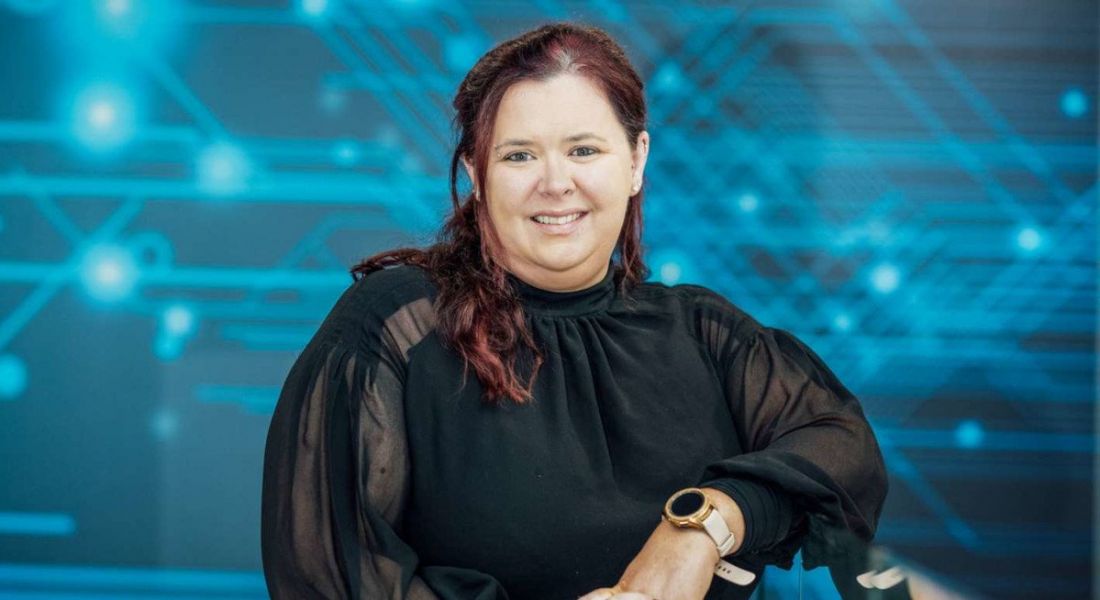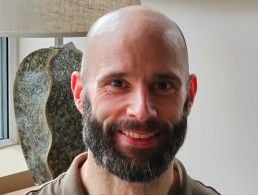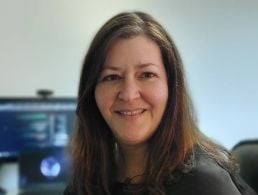Intel’s Tricia Cahill discusses how she ended up as a cloud software engineer and what needs to be done to improve diversity in STEM.
For cloud software engineer Tricia Cahill, a career in engineering wasn’t an obvious choice during her formative years.
“I went to an all-girls convent secondary school and as there were not many possibilities for engineers at the time, I studied business during my initial years of college before realising that it was not the path I wanted to take,” she explains.
After realising this, Cahill was inspired by her family’s history of involvement in the service industry and decided that she was going to open her own bar before she turned 30. Her determination ultimately paid off, but due to a difficult economic climate, she unfortunately had to cease trading and close down the bar. In the aftermath of this difficult decision, however, she found another route to channel her resolve.
“After the bar closed, I was heartbroken and needed a change in direction regarding my career, and engineering was a complete U-turn!”
Cahill signed up for a one-year springboard engineering course at the Galway-Mayo Institute of Technology – now known as the Atlantic Technological University (ATU) – with the intention of doing work placement and gaining full-time employment on completion.
“It did not take me long to realise that I really enjoyed the subjects and due to the amazing support of my family, I was able to sign up for the full-time degree – three more years for Level 7 in computer and electronic engineering and two more for Level 8 in software in electronic engineering.”
During her time at ATU, Cahill got her first taste of working at Intel through an internship. Now, Cahill is a cloud native engineer at Intel’s Shannon location.
‘Just because you started down one path, does not mean that you must stay on it’
Tell me about your current role, what it entails and what a typical day looks like
As a cloud software engineer, my role primarily revolves around designing, developing and maintaining cloud-based applications and systems.
A typical day as a cloud software engineer involves a mix of tasks. Most of our days start with stand-ups to sync with our team, discuss progress and brainstorm solutions. As a team we spend time optimising application performance and ensuring efficient resource utilisation.
As of late, my role has slightly changed, and I am now overseeing the release processes for the various workstreams inside my group to make sure we are adhering to all legal, quality and security requirements.
What skills do you use daily?
Organisation and people skills are strong skills of mine, and ones I use the most. I love collaborating with people from all over the world as I enjoy connecting with them and gaining knowledge from them all. Not being able to meet face-to-face was difficult during Covid-19, but I made it a point to always have my camera on to establish a personal connection. Even now, while working in hybrid, my camera is constantly on.
Working in an agile atmosphere suits me because I am very task-oriented and get a great deal of satisfaction when tasks are completed.
What have been the biggest challenges throughout your career and how do you navigate them?
One of my biggest challenges was overcoming the fear of asking too many questions, and this is an issue that many people who are just starting out in an industry experience. Originally, I was afraid to ask the question because I did not want to seem completely stupid, and I also did not want to bother or take up anyone’s time. Although it took me some time to have the confidence to ask, I still do so daily. At Intel, I was assured that questions are never dumb, and that people are usually willing to take the time to explain problems or solutions.
‘It is a serious issue that there are not enough women in STEM fields’
Do you have any productivity tips that help you through the day?
My biggest productivity tip is to collaborate and communicate with your team as much as possible. When team members do this effectively, we can pool our knowledge, skills and perspectives to find innovative solutions to problems and challenges. By working together, team members can inspire each other, share different ideas and think creatively. This workflow can eliminate bottlenecks and can lead to higher productivity. But most importantly, it builds strong relationships between team members. This creates a positive and supportive work environment, enhancing morale and job satisfaction.
You’re a huge advocate for women in STEM. Tell me about this and what more you think needs to be done in this area?
It is a serious issue that there are not enough women in STEM fields, particularly in engineering. I was one of three women that graduated from my college course. In the engineering world, my team is an anomaly as it is evenly split between male and female engineers.
Introducing women to engineering requires a great deal of work, and it must begin when girls are still young and the path to become engineers is just like choosing to pursue any other subject. We are fortunate that Intel devotes a significant amount of time and resources to this area, for example I was given the opportunity to get involved in the Intel Mini Scientist Competition in the past. The kids have such a great time, and the projects are of such high calibre. I have also had the opportunity to go to primary schools and do coding or different engineering challenges with the children. If these activities can encourage any child – girl or boy – that engineering may be for them, then it was a huge success.
What aspects of your personality do you feel make you suited to this job?
As I consider multitasking to be a superpower of most parents, I use this superpower in my professional life also. Setting reasonable and attainable goals and deadlines is one of my primary responsibilities. We regularly assess the progress to make sure projects stay on course and make any schedule adjustments. I enjoy being active and always learning new things. Thanks to Intel, I have the chance to pursue my MSc in leadership, technology and innovation at Technological University Dublin. This is a fantastic opportunity for me, and I hope to apply the knowledge I gain back to the company.
What advice would you give to those considering a career in this area, or just starting out in one?
It is never too late! Just because you started down one path does not mean that you must stay on it. It is OK to try different paths and if they do not work out, it is OK to change. Just because one job failed, it does not make you failure – it makes you stronger and a little wiser. My path to engineering was a long, winding and sometimes rough one, but I got there in the end. In saying that, this is not the end of my engineering journey, and I am so excited to see what challenges await me.
10 things you need to know direct to your inbox every weekday. Sign up for the Daily Brief, Silicon Republic’s digest of essential sci-tech news.




